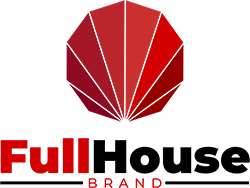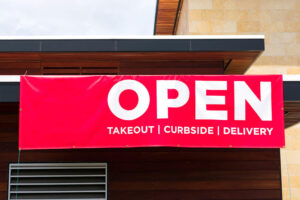So you’ve decided to start creating advertisements for your business. You’ve done all the research. You have a firm understanding of your customer persona. You know exactly what channels you’re going to leverage — maybe Yelp, Cartvertising, billboard advertising, and some Facebook ads.
Now, the only thing you have to do is create, store, and manage those marketing materials.
Creating Marketing Materials
Back in the days of Mad Men, everything happened manually. A client (you) would send an advertising company a creative brief, and they’d hand-draft some visuals, hammer out some copy on their typewriters, and present you with some options. Luckily for you, creating advertising materials is much simpler today. As a result, you have two options for creating advertisements: do it yourself (DIY) or hire a freelancer.
There are a few great benefits to hiring a freelancer. One, if you aren’t technically or creatively skilled in design and copywriting, you’ll probably get a better end product than if you did it yourself.
Two, you’ll probably save time — no business owner has enough time on their hands to get everything done, so that’s a major benefit.
Three, there are thousands of freelancers out there to choose from. Using platforms like LinkedIn and Upwork, it shouldn’t be too hard to find someone who both fits your budget and has a portfolio of work you admire.
There are also some benefits to taking the DIY approach. The main advantage is you might save money.
If you have a vision for the sort of advertisements you want to create, plus some basic technical and design skills, you should be set. In addition, free design tools like Canva make creation easy — you don’t need to shell out for expensive software.
The other benefit of taking the DIY approach is that you have complete creative control. Of course, that’s only a good thing if you have strong creative abilities. It can be great to have another person to bounce ideas off of! A third approach is to hire someone you already know, someone who has better creation skills than you but is also already familiar with your business.
Managing Marketing Materials
Once you’ve created your marketing materials, you’ll want a good place to store them. Simply keeping all of your digital collateral — advertisements, photographs, a PDF of your menu (if you run a restaurant), social media posts, etc. — on a local hard drive is not advisable in this day and age.
Hard drives can crash. Computers can be stolen. Water and fire damage can quickly ruin any hard drive. These things don’t necessarily happen often, but they can happen. The best practice is to select a good cloud storage platform where your digital marketing assets are both safe and easily accessible.
When you store your marketing materials in the cloud, it’s easy to send them to the people and places who need them, i.e., deployment to digital advertising channels and the people who run the traditional advertising channels you might be using. If you decide to hire a freelancer, instead of back-and-forth emails, they can upload their drafts and finished products to the platform of your choice. Everything will be in one place, plus you’ll be able to view all the files on your mobile device or your computer.
Remember that a modern business needs to utilize both online and traditional advertising channels and needs to maintain a business website and social media accounts. You’ll need different images and different bits of copy for each one of those channels. All of that can live on and be organized in the cloud.
Iterate Your Advertisements
A significant part of running a business is iterating. If you run a restaurant, you need to track the sales performance of all your menu items, business flow by the hour, by day, etc. If you run a salon, you need to track similar factors — business by day, which services sell best, etc. The same goes for your advertisements and other marketing materials. Study what you’re already doing, track performance, and if that performance isn’t what you want or expect, tweak that menu item (or that advertisement or social media post) and try again. Repeat as needed.
Pick a good social media management tool to track how your different accounts and specific posts perform. Are they not performing well? Iterate on them! Change what time of day you post. Take better quality photographs. Write your captions differently. Maybe focus your energies on an entirely different social media platform.
Iterate on your actual advertisements as well. Do you feel like your billboard advertisement isn’t bringing you enough business? Refocus that money into grocery store advertising. If you chose to hire a freelancer to create your advertisements, reach back out to them, ask them to change the ad slightly to reflect what you feel isn’t working about it, and have them re-upload it to your cloud storage. Don’t pay for a whole new ad; just iterate! A new headline or more irresistible offer can make all the difference.
A business owner’s work is never done. Your employees might go home for the day and stop thinking about work; you need to constantly think about how to improve your business and drive more sales. There are a lot of moving parts.
Utilize free software for tasks like storage, organization, and content creation to make your life easier. Many of these products have a “freemium†model, which means you start with all the features for free, with a few limitations, and only have to pay once you reach a certain amount of storage used or documents created. Most small business owners will never reach that paywall. Lastly — remember always to be iterating!
Source: RTUI/Indoor Media – July 23, 2021
Request your grocery receipt advertising quote today:
info@fullhousebrand.com




